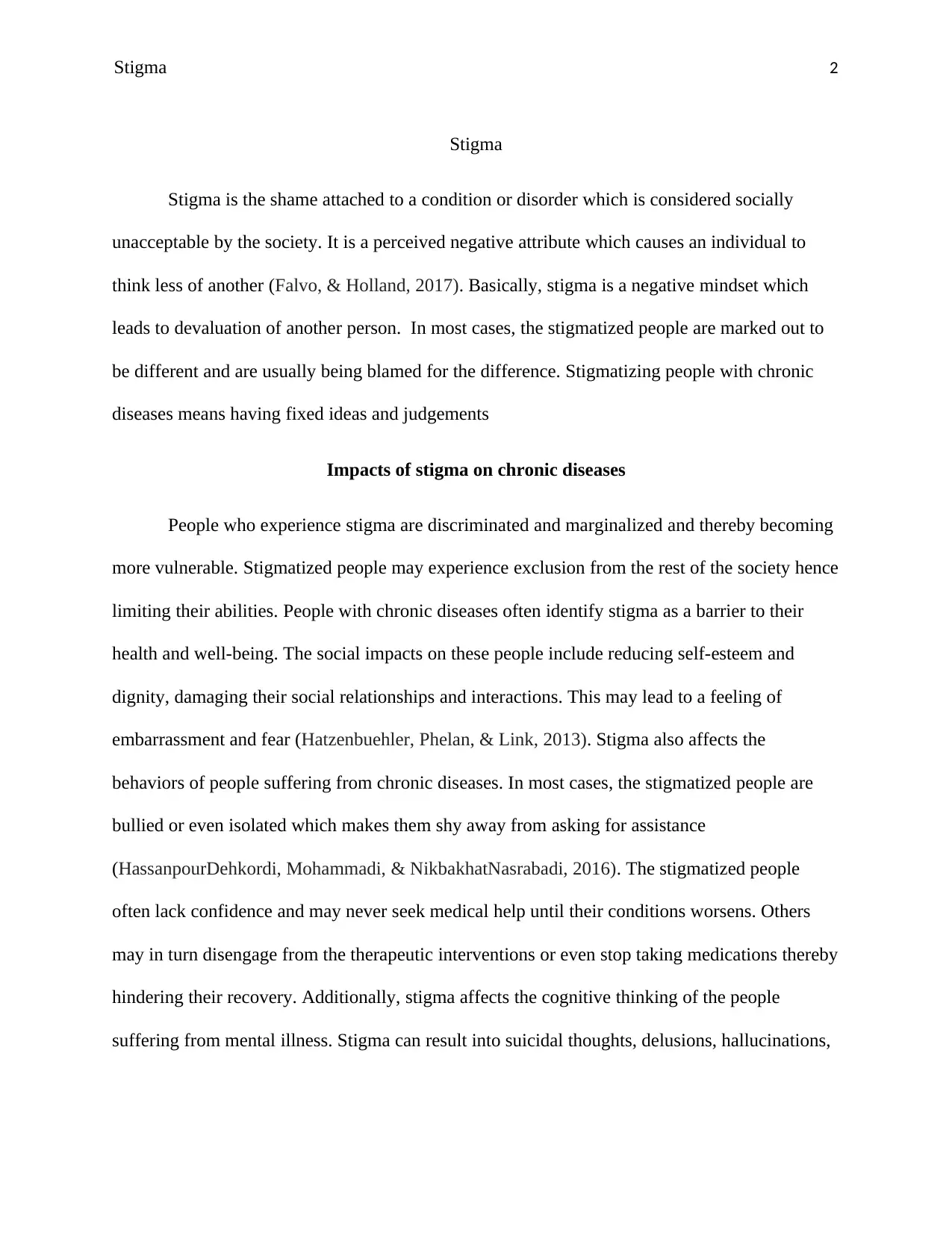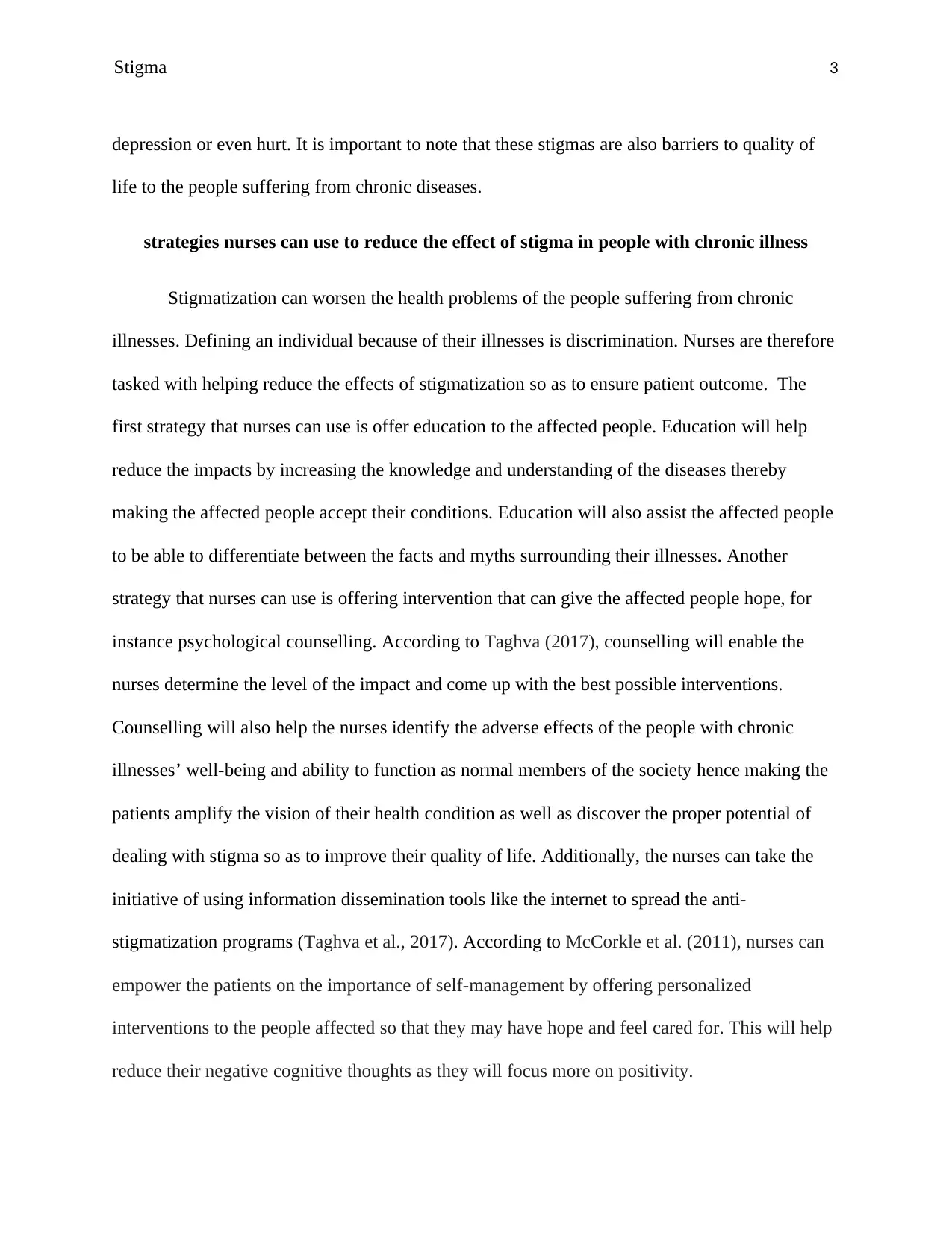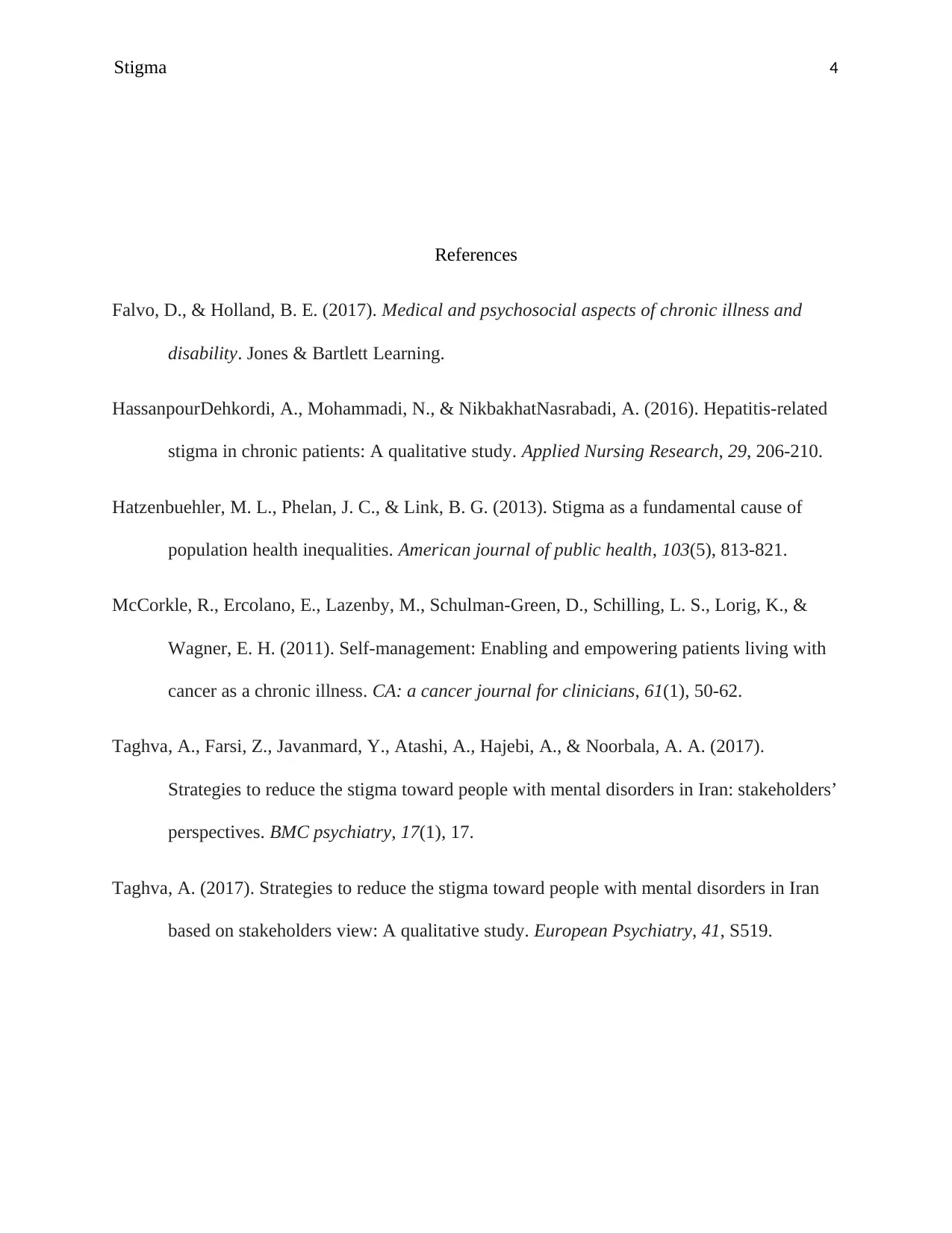Reducing Stigma: Strategies for Nurses in Chronic Illness Management
VerifiedAdded on 2023/01/18
|4
|904
|99
Essay
AI Summary
This essay explores the multifaceted issue of stigma in the context of chronic illnesses. It begins by defining stigma as a negative social perception that devalues individuals with certain conditions, highlighting its detrimental effects on patients. The essay then delves into the impacts of stigma on people suffering from chronic diseases, including social isolation, reduced self-esteem, and barriers to seeking medical help. It further examines how stigma influences patient behaviors, such as avoidance of assistance and non-adherence to treatments. The essay emphasizes the cognitive and emotional consequences of stigma, such as suicidal thoughts and depression. Finally, it outlines several strategies that nurses can employ to mitigate the effects of stigma, including education, psychological counseling, and the use of information dissemination tools to promote understanding and reduce negative perceptions. The essay underscores the importance of nurses in improving patient outcomes and quality of life by addressing the challenges posed by stigmatization.
1 out of 4











![[object Object]](/_next/static/media/star-bottom.7253800d.svg)